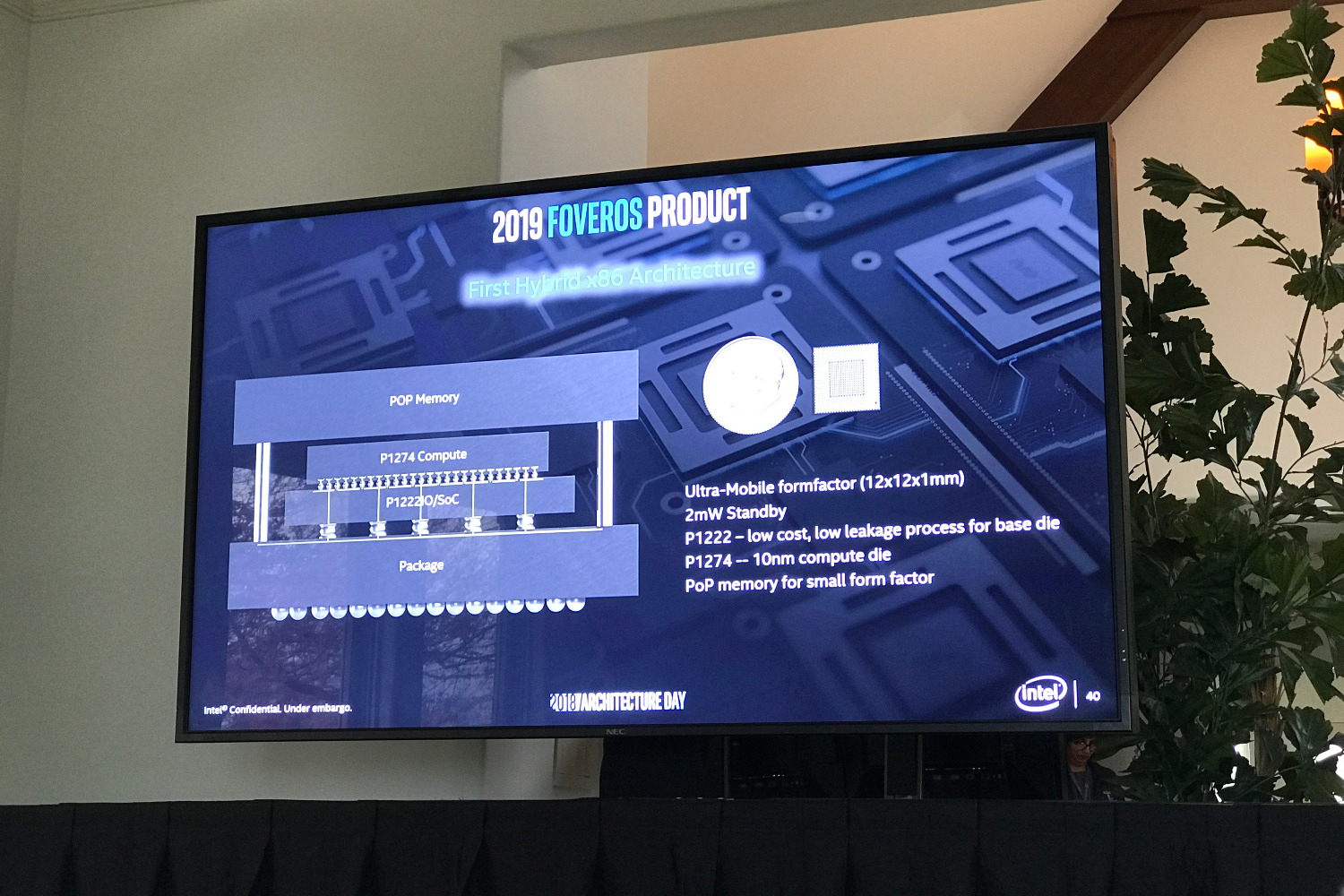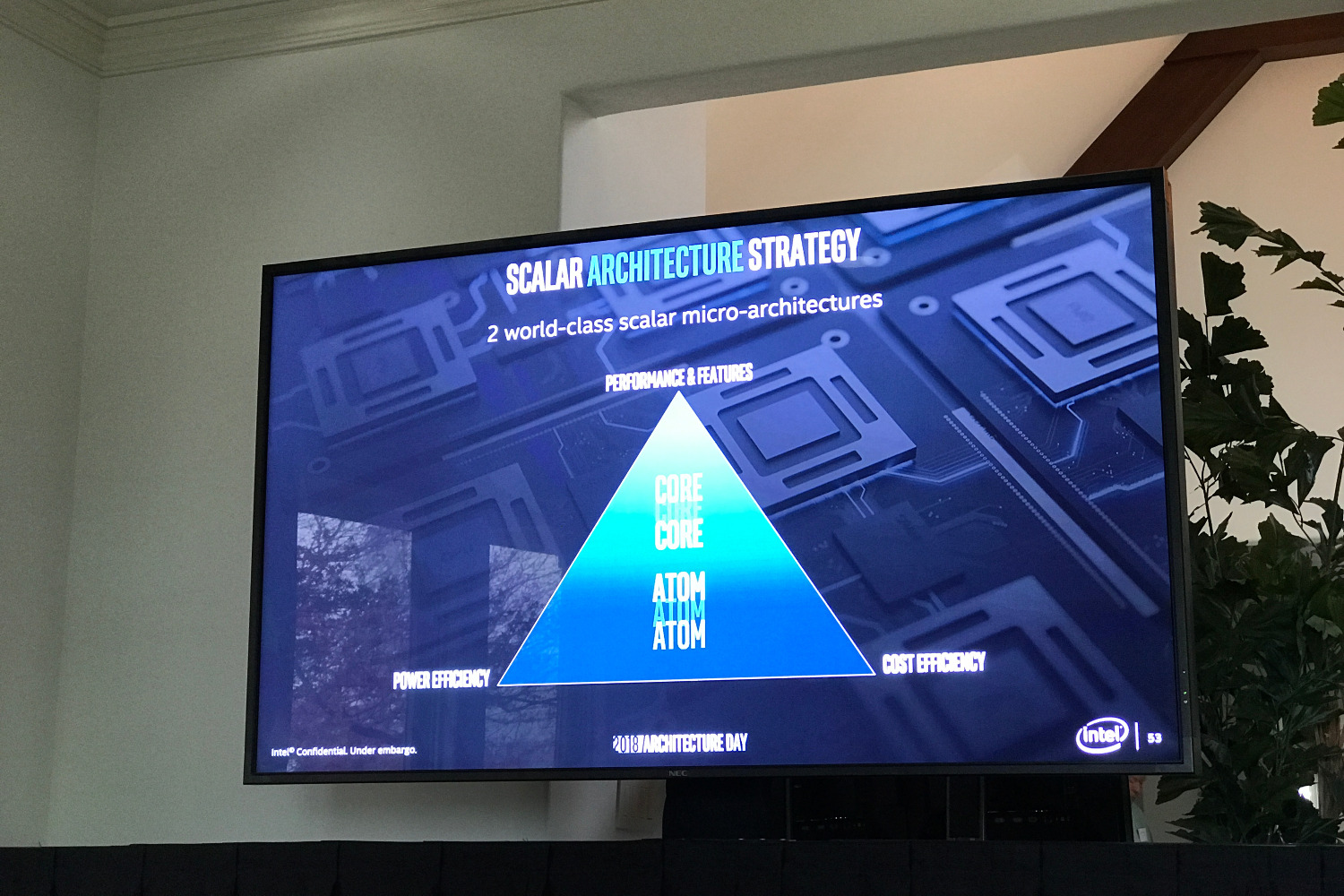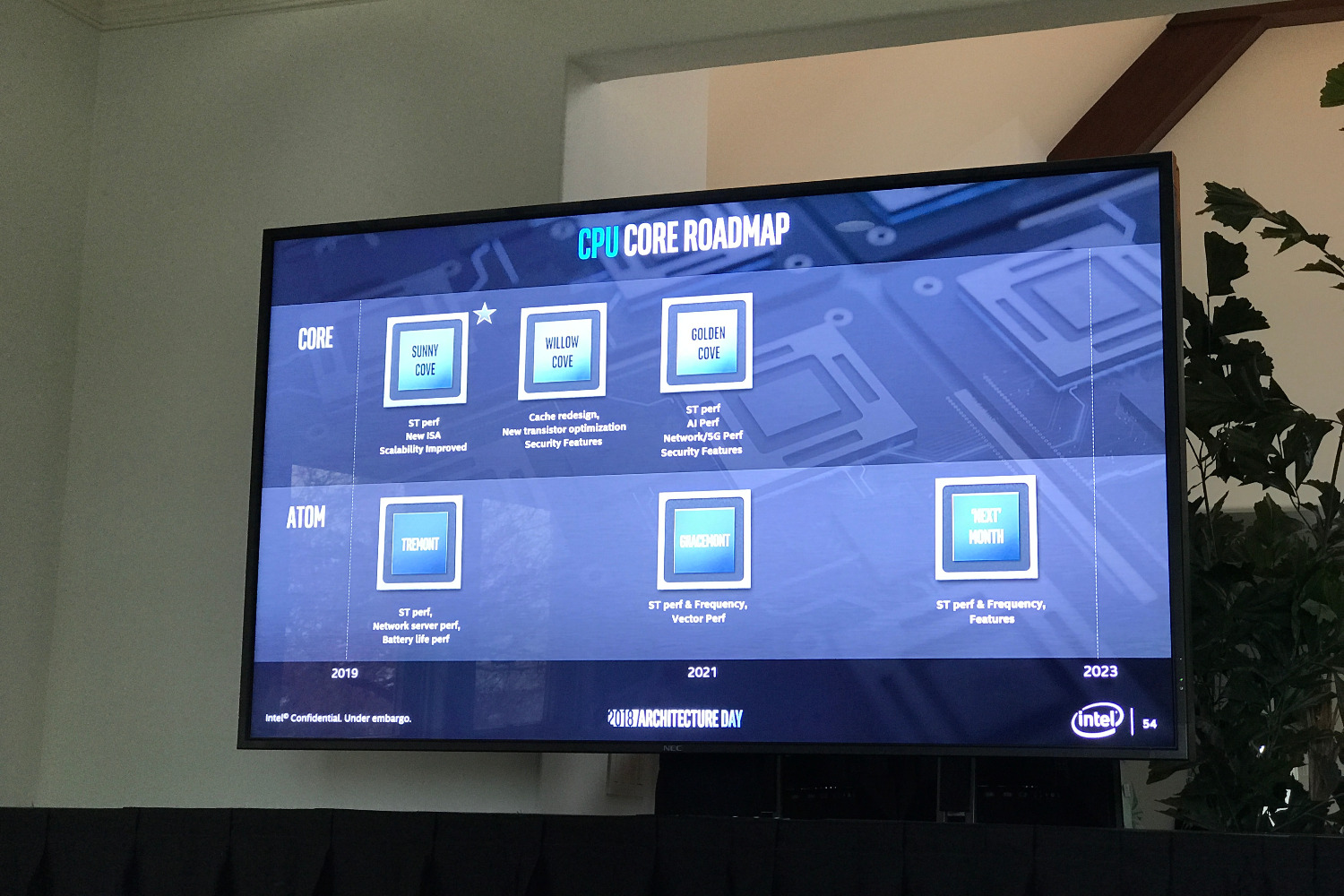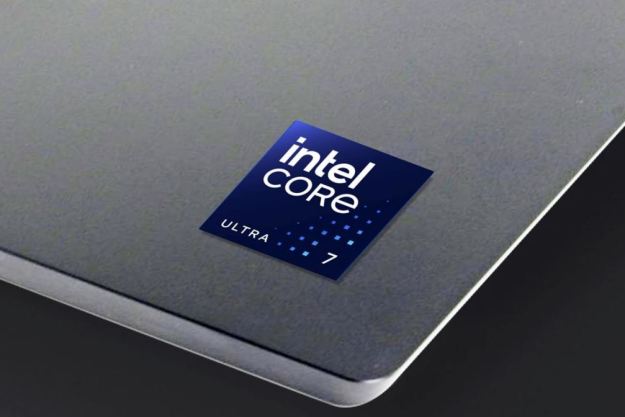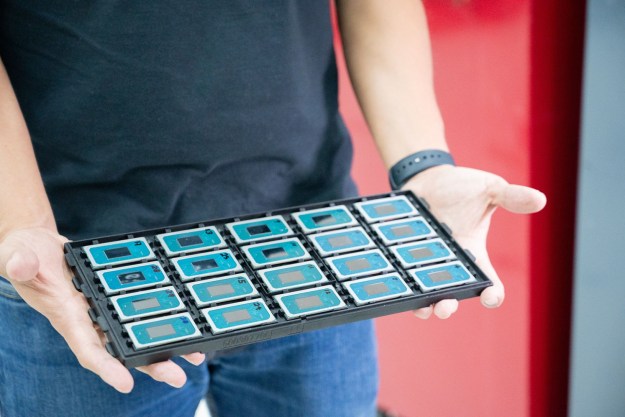
Intel has confirmed that it’s working on a discrete graphics solution for “client PCs,” which will arrive in 2020. That, however, is far from all Intel is working on.
The company laid out its long-term architecture plans at an ‘Architecture Day’ event attended by Digital Trends. There, Raja Koduri, senior vice president of Intel architecture and graphics solutions, explained Intel’s new goal. “10 petaflops of data, 10 petabytes of compute, less than 10 milliseconds away.”
That’s an ambitious goal, and Intel believes it can only be achieved by moving into an era of hardware design that Intel calls the “architecture era.” Koduri went so far as to say “the next 10 years will see more architecture advancement than the last 50 years.”
To help achieve this, Intel has announced a new packaging design called Foveros, coming next year.
Intel says the first Foveros package is 12 millimeters by 12 millimeters in size – smaller than a dime – built on a 10-nanometer production process. It will offer performance in league with existing Core hardware but have a standby power draw of only two milliwatts. These traits make it suitable for a very broad range of tablets and laptops (no, it doesn’t appear Intel intends to target smartphones).
Foveros is a “hybrid x86 architecture” that will use both Core and Atom architectures in tandem. In other words, it takes a “big core, little core” strategy like that used by many chip designs targeting smartphones. Here, the “big core” hardware is based on the Core architecture, which offers best performance, while the “little core” uses Atom hardware, offering optimal power efficiency in low-demand and idle use. The goal is to offer all-day battery life (up to 25 hours, in fact), with one month of standby power, without sacrificing performance.
If those battery life claims sound familiar, it might be because they’re in line with what Qualcomm’s Snapdragon promises for Windows 10 laptops. Intel’s not promising LTE connectivity, as Qualcomm does, but the aim to drastically improve endurance, both active and standby, seems a clear response to potential Qualcomm competition.
It’s important to note that Intel is calling Foveros a “packaging technology.” In other words, it’s not a specific architecture, and it’s not a specific product line. It’s instead a way of building a “system-on-a-package” that Intel might use for a wide variety of hardware in the future. In fact, we don’t yet have any retail product names for the products that will be built using the technology, and we don’t know exactly what devices they might appear in – though Intel did show unbranded images of laptops and tablets as part of its demonstration.
That means Foveros isn’t a new branch of architecture. Intel’s roadmap for CPU architecture still focuses on advancement of both Core and Atom over the next five years. Foveros is not a change to those plans, but instead a new way to implement them. While Intel made no specific announcements about branding, what we saw heavily suggested the company will continue to use the Core and Atom slogans on products.
Still, it represents a shift in strategy for Intel. With Foveros, the most important element is not necessarily the speed of each individual chip on the package, but instead the speed of all elements working together in each specific use case. Jim Keller, Intel’s senior vice president and general manager of the silicon engineering group, said it shifts the question Intel must answer. “Instead of compute and transistors being key pillars,” he said, “What if it was memory and security?”
You might have questions about what this will mean in practice, and while Foveros is slated for 2019, specific answers are few. We don’t yet know any devices this technology might appear in, or a final name for the shipping product. We expect to hear answers to these questions next month at CES 2019.
Editors' Recommendations
- Nice try, Intel, but AMD 3D V-Cache chips still win
- Intel just boosted gaming performance by up to 155%
- Intel’s awkward transition year
- The best Core Ultra laptops that just got announced
- Intel just called out Nvidia
